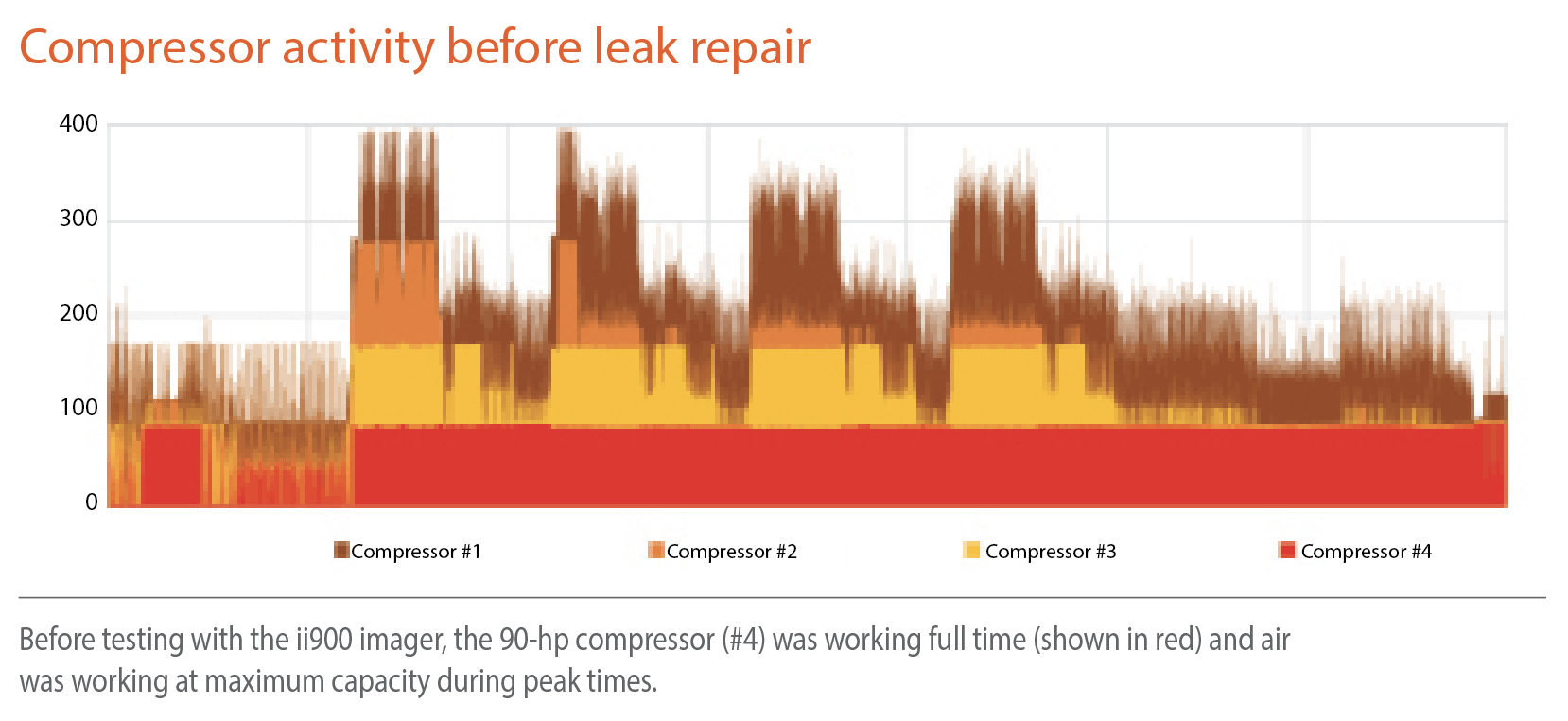Find Invisible Leaks
EP Editorial Staff | February 12, 2020
Manufacturer recovers more than 25% of compressed-air capacity using sonic imager.
When a production line relies heavily on compressed air to run tools and processes, even tiny air leaks can multiply product waste, energy costs, and lost production time. Staying on top of those air leaks is a priority. Genie, a Terex brand, and a global manufacturer of aerial lift equipment, recently found a new weapon to help combat those pesky and costly leaks.
Genie’s plant in Redmond, WA, uses between 1,800 and 2,600 cfm of compressed air daily. That air runs as many as 200 torque tools on each line, along with process equipment used to move large sheets of half-inch steel and to position parts. If the tools don’t have enough compressed-air pressure to function properly, the results are costly.
Finding invisible leaks
The company is vigilant about finding and fixing air leaks. Some leaks occur in hoses and fittings high in the rafters; others appear on the torque tools on the shop floor. One or two maintenance technicians would hunt for air leaks over a weekend. They first sprayed joints and hoses with a soap-and-water mixture and searched for bubbles that indicated leaks. Then they fixed the leaks and retested with soapy water.
“It was very labor intensive,” said Josh Stockert, Genie Maintenance Supervisor, Terex AWP. “It might take 30 to 45 minutes to find one leak in the rafters, and then come back down to get material to fix it, go back up and fix the leak, and verify with soap and water that the leak was fixed.”
The soap-and-water method works, but slowly, and it requires a lot of cleanup to prevent slipping hazards. The company also tried using ultrasonic parabolic discs connected to headphones to try to find leaks, but without much success. Technicians couldn’t get close enough to the equipment to determine the exact leak location. In addition, traditional ultrasonic leak
detectors detect only very high-frequency leaks and air leaks occur in many frequency ranges.
Seeing air leaks
Genie tried a new leak-detection technology that includes an array of tiny super-sensitive microphones. The Fluke ii900 sonic industrial imager not only detects sounds in the human hearing range (2 to 20,000 Hz) and the ultrasonic range (20,000 Hz and higher), but also presents those sounds visually on screen. The imager applies proprietary algorithms to determine the location of a leak. According to Javier Irazola, Global Product Manager for Industrial Imaging at Fluke Corp., Everett, WA (fluke.com), the results produce a color SoundMap image superimposed over a visible-light image of the equipment to show the user the exact leak location. The user views the results on a 7-in. LCD screen as a still image or a real-time video.
“Being able to visualize where the problem is, and how big it is, adds another dimension,” said Stockert. “You can identify which threads, fitting, or hose is affected. Being able to pinpoint where the leak is coming from on that image is extremely exciting. You can see different angles and determine ‘Yep, it’s these threads versus that hose that feeds this fitting.’”
Saving time, staying safe

Beyond making leak detection faster and easier, the imager also makes it safer and more compatible for use during normal business operations. No messy soap and water to use or clean up, and the sonic imager can be used to test for leaks during production without disrupting operations or putting technicians in dangerous situations. “Before, we never thought of testing for air leaks during production because we couldn’t shut down the aisles and move people out of an area to go up and look at a potential leak,” said Stockert. “Now, we can stand on the sideline and scan the air line overhead, while carts and people move
underneath. We’re not affecting their work, but we can tag the leak and then move a lift to that spot during lunch and fix it rather than having to wait for a weekend PM shift.”

Click here to see Fluke’s Justin Sheard describe and demonstrate the ii900 sonic industrial imager. In the video you’ll learn how the instrument functions and see it detect leaks and capture them in still images and video. For more about the ii900 imager, visit fluke.com.












View Comments